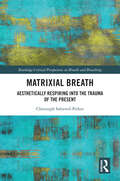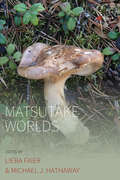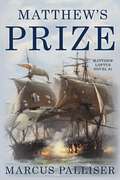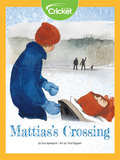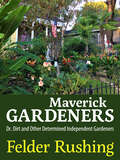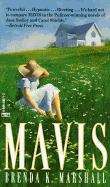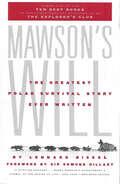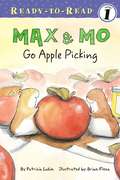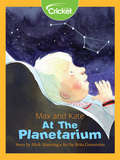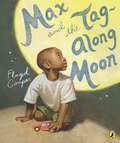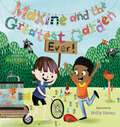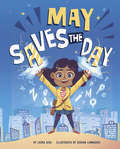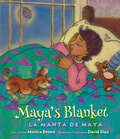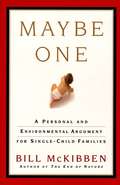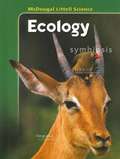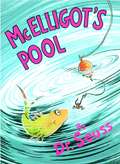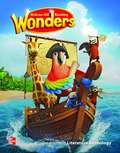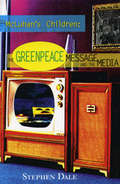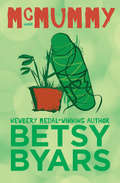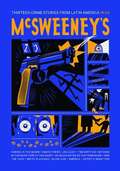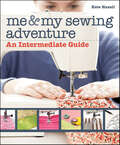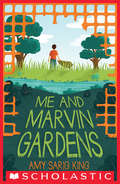- Table View
- List View
Matrixial Breath: Aesthetically Respiring into the Trauma of the Present (Routledge Critical Perspectives on Breath and Breathing)
by Christoph Solstreif-PirkerDay by day, the global climate crisis intensifies, yet there are little changes in the behavior of privileged societies. This book reveals that such paradoxical behavior is due to the prevalence of a narrative that considers planet Earth as a self-sustaining system, driven by a circular respiration pattern from one actor to the next. It argues that transforming this prevailing planetary breathing pattern is necessary to change humans’ destructive behavior towards the morethan- human environment. The volume, in particular, references the feminine Matrixial Theory of psychoanalyst and philosopher Bracha L. Ettinger. In linking the Matrixial Theory to environmental issues for the first time, it explores the rhythms and scopes of a Matrixial breath and what alternative forms of relationship between humans and nature might emerge from it. It lays the foundation for an urgently needed subversion of thought and action toward novel ethics of breathing-with beyond homeostatic reductionism.The first of its kind, this volume will be indispensable for students and researchers of environmental ethics, feminist thought, climate studies, social change, or critical theory. It will also be useful to cultural scientists, artists, philosophers, ecologists, theologians, architects, therapists, social workers, educators, and politicians.
Matsutake Worlds (Studies in Social Analysis #12)
by Lieba Faier and Michael J. HathawayThe matsutake mushroom continues to be a highly sought delicacy, especially in Chinese, Japanese, and Korean cuisine. Matsutake Worlds explores this mushroom through the lens of multi-species encounters centered around the matsutake’s notorious elusiveness. The mushroom’s success, the contributors of this volume argue, cannot be accounted for by any one cultural, social, political, or economic process. Rather, the matsutake mushroom has flourished as the result of a number of different processes and dynamics, culminating in the culinary institution we know today.
Matthew's Prize
by Marcus PalliserIn the final decade of the 17th century in England, the Dutch trade wars are coming to a close, and the struggles with the French for naval supremacy are just starting. Meanwhile, young Matthew Loftus has no intention of spending his life underground in the coal mines of Whitby. Living in a seaside town, he studies navigation and yearns to go to sea, following in his late father's footsteps. He eventually leaves the port of Whitby for what he expects will be a short voyage, but after he risks his life to save a man who fell overboard, Loftus is himself rescued by a passing Dutch trader—that turns out to be a pirate ship. The Dutch vessel sweeps Matthew to the Spanish Main where he, surprisingly readily, plunges into a bloody life of pillage and prize money. Struggling to adhere to his code of honor yet seduced by life at sea, Matthew carries in his heart the hope of reclaiming his rightful legacy. Furthermore, he longs to be worthy of the woman he loves—the woman he left behind in Whitby—who was on the brink of marriage to another man. Fierce sea battles, lawless privateers, naval skirmishes, and ruthless slave traders combine in this story of adventure and high drama.
Mattias's Crossing
by Eva ApelqvistMattias is getting ready to leave for his hockey game when his mother suddenly falls ill. His father is away tending their reindeer herd, so it’s up to Mattias to get her down the mountain through the snow and ice and find emergency help.
Mauritius: A successful Small Island Developing State (Europa Perspectives: Emerging Economies)
by Robin Nunkoo Boopen Seetanah Raja Vinesh SannasseeThe economic upturn and performance of Mauritius is a far cry from predictions made in the 1960s. The island’s remarkable economic performance since the 1980s can been attributed to a multitude of factors instrumental to the success of the economy, including structural reforms, outward looking export orientated strategies, diversification in the manufacturing, tourism and financial services sectors amongst others, sound economic governance and institutions, and significant investment in human capital. This book attempts to provide a detailed analysis of the various key ingredients which have helped to propel Mauritius to its current status. The various chapters provide important readings for both academics and policymakers, with the final chapter providing key policy strategies which the government needs to implement to help Mauritius graduate to the next level of development: namely to that of a high-income economy and, in moving out of the middle-income trap, laying the foundations for future growth and shared prosperity in the light of both domestic challenges and global constraints.
Maverick Gardeners: Dr. Dirt and Other Determined Independent Gardeners
by Felder Rushing“Be forewarned that this book honors people like the woman in my hometown who paints the numbers of her favorite NASCAR drivers on her elephant ears, and a Tokyo gardener with over a hundred bonsai plants.” So says renowned garden journalist Felder Rushing in his new book Maverick Gardeners: Dr. Dirt and Other Determined Independent Gardeners. In this book, Felder delves deeply into the psychology of what motivates and sustains the Keepers of the Garden Flame. For thousands of years, a loosely connected web of unique, nontraditional gardeners has bonded people across race, culture, language, and other social conventions through sharing unique plants and stories. Found in nearly every neighborhood worldwide, these “determined independent gardeners” (DIGrs) are typically nonjoiners who garden simply and exuberantly, eschewing customary horticultural standards in their amateur pursuits of personal bliss. Included in Maverick Gardeners are classic “passalong plant” lists, a dollop of how-to, numerous color photographs, and thought-provoking essays on quintessential tools, sharing with others, getting away with wildflowers in suburbia, and organizing a plant swap. The centerpiece of this unique gardening journey is the no-holds-barred story of a ten-year cross-cultural collaboration between the horticulturist author and a flamboyant rebellious gardener who called himself Dirt. Through swapping plants and garden lore—and rubbing shoulders with fellow DIGrs—they unraveled their shared humanity. From the practical to the inspiring, Maverick Gardeners is the perfect book for those nonconformist souls who see no sense in trying to fit in and follow the footpaths of others.
Mavis
by Brenda K. Marshall[From the back cover:] Mavis Schmidt Holmstead has always been the strong one. The oldest of six sisters who grew up on a North Dakota farm, Mavis has spent a lifetime comforting and cooking, mending and managing. Now a man is dead, and the confessed murderer is Mavis--widow, mother, grandmother, matriarch. Soon her sisters gather together, not only to support Mavis, but to discover the truth. She must be lying about the murder, but why? To answer that question, buried secrets are exposed, revealing shocking truths that are both harrowing and redemptive...
Mawson's Will: The Greatest Survival Story Ever Written
by Sir Edmund Hillary Lennard BickelMAWSON'S WILL is the dramatic story of what Sir Edmund Hillary calls "the most outstanding solo journey ever recorded in Antarctic history." For weeks in Antarctica, Douglas Mawson faced some of the most daunting conditions ever known to man: blistering wind, snow, and cold; loss of his companion, his dogs and supplies, the skin on his hands and the soles of his feet; thirst, starvation, disease, snowblindness - and he survived. Sir Douglas Mawson is remembered as the young Australian who would not go to the South Pole with Robert Scott in 1911, choosing instead to lead his own expedition on the less glamorous mission of charting nearly 1,500 miles of Antarctic coastline and claiming its resources for the British Crown. His party of three set out through the mountains across glaciers in 60-mile-per-hour winds. Six weeks and 320 miles out, one man fell into a crevasse, along with the tent, most of the equipment, all of the dogs' food, and all except a week's supply of the men's provisions.Mawson's Will is the unforgettable story of one man's ingenious practicality and unbreakable spirit and how he continued his meticulous scientific observations even in the face of death. When the expedition was over, Mawson had added more territory to the Antarctic map than anyone else of his time. Thanks to Bickel's moving account, Mawson can be remembered for the vision and dedication that make him one of the world's great explorers."A riveting account . . . makes Mawson's achievement a symbol of the desire to live." -- The New York Times Book Review"A powerful reading experience." -- Publishers WeeklyFrom the Trade Paperback edition.
Max & Mo Go Apple Picking
by Brian Floca Patricia LakinMax and Mo are tired of eating corn. Luckily the big ones -- the kids -- just went apple picking. Everyone knows you can make applesauce with apples, but is there anything else you can make with them?
Max and Kate: At the Planetarium
by Mick ManningDid you know you can explore space and visit the stars from right here on planet Earth? Follow along with Max and Kate as they visit a science museum and learn about the night sky.
Max and the Tag-Along Moon
by Floyd CooperExperience the wonder of the moon following you home with a Coretta Scott King Award-winning illustrator! Great for Father’s Day and Grandparent’s Day!Max loves his grandpa. When they must say good-bye after a visit, Grandpa promises Max that the moon at Grandpa’s house is the same moon that will follow him all the way home. On that swervy-curvy car ride back to his house, Max watches as the moon tags along. But when the sky darkens and the moon disappears behind clouds, he worries that it didn’t follow him home after all. Where did the moon go—and what about Grandpa’s promise? Floyd Cooper received the Coretta Scott King Award for The Blacker the Berry, three Coretta Scott King Honors for Brown Honey in Broomwheat Tea, Meet Danitra Brown, and I Have Heard of a Land, and an NAACP image award. In Max and the Tag-Along Moon, his lush paintings perfectly capture the wonder of the moon, the love between grandfather and grandson, and that feeling of magic every child experiences when the moon follows him home.. “Coretta Scott King Award–winning Cooper has created a gentle, comforting story that will reassure children that those who love us are always with us.”—Booklist“Cooper uses his signature style to illustrate both the landscape--sometimes viewed from the car windows or reflected in the vehicle's mirror--and the expressive faces of his characters. Coupled with the story's lyrical text, this is a lovely mood piece. A quiet, warm look at the bond between grandfather and grandson.”—Kirkus Reviews
Maxine and the Greatest Garden Ever
by Ruth SpiroBest friends Maxine and Leo combine their maker and artistic skills to create (and save!) the ultimate garden in this empowering, STEM-focused picture bookAfter sketching and plotting and planting, Maxine and Leo know they've made The Greatest Garden Ever! But they're not the only ones who think so. Soon, all sorts of animals make their way in, munching on carrots and knocking over pots. When Leo and Maxine can't agree on a way to deter these unwelcome critters, it looks like there's more on the line than saving their garden--they just might need to save their friendship too.
May Saves the Day
by Laura GehlFrom her trendy suit to her messenger bag, May is the picture of a successful businesswoman. After all, she is founder and sole proprietor of Word Saver, Inc. Carrying her trusty bag of letters, May saves the day again and again, turning angry BEES into playful BEETS and a rampaging BEAR into a silly BEARD. Stu begs to be her sidekick, but May insists that a businesswoman does not need a sidekick. However, May quickly realizes that teamwork may be the word of the day when a tornado threatens the town. Author Laura Gehl brings word play to a new level in this adventurous and humorous picture book, featuring spirited art by Serena Lombardo.
Maya Lin, Public Art, and the Confluence Project (Routledge Focus on Art History and Visual Studies)
by Matthew ReynoldsThe first scholarly monograph devoted exclusively to this vital work of contemporary public art, this book examines Maya Lin’s Confluence Project through the lens of environmental humanities and Indigenous studies. Matthew Reynolds provides a detailed analysis of each earthwork, along with a discussion of the proposed final project at Celilo Falls near The Dalles, Oregon. The book assesses the artist’s longtime engagement with the region of the Pacific Northwest and explores the Confluence Project within Lin’s larger oeuvre. Several consistent themes and experiences are common amongst all the sites. These include an emphasis on individual, multisensory encounters with the earthworks and their surrounding contexts; sound as an experiential dimension of landscape; indexical accounts of the multicultural, multispecies histories of each place; and an evocation of loss. The book will be of interest to scholars working in art history, contemporary art, environmental studies, environmental humanities, and Native American studies.
Maya's Blanket: La manta de Maya
by Monica BrownBilingual English/Spanish. Based on a Yiddish folk song, a young girl's cherished baby blanket becomes old and worn over time and she finds new ways to use it as she grows up.Little Maya has a special blanket that Grandma stitched with her own two hands. As Maya grows, her blanket becomes worn and frayed, so with Grandma's help, Maya makes it into a dress. Over time the dress is made into a skirt, a shawl, a scarf, a hair ribbon, and finally, a bookmark. Each item has special, magical, meaning for Maya; it animates her adventures, protects her, or helps her in some way. But when Maya loses her bookmark, she preserves her memories by creating a book about her adventures and love of these items. When Maya grows up, she shares her book--Maya's Blanket/La manta de Maya--with her own little daughter while snuggled under her own special blanket. Inspired by the traditional Yiddish folk song "Hob Ikh Mir a Mantl" ("I Had a Little Coat"), this delightful bilingual picture book puts a child-focused, Latino spin on the tale of an item that is made into smaller and smaller items. Maya's Blanket/La manta de Maya charmingly brings to life this celebration creativity, recycling, and enduring family love.
Maybe One
by Bill MckibbenFrom the groundbreaking, bestselling author of The End of Nature, a controversial and provocative book arguing that to help the planet we should begin to voluntarily limit our numbers. Bill McKibben's books and essays on our environment -- physical and spiritual -- have shaped and spurred debate since The End of Nature was published in 1989. Then, he sounded one of the earliest alarms about global warming; the decade of science since has proved his prescience. Now, in Maybe One, he takes on the most controversial of environmental problems -- population. We live in a unique and dangerous time, he asserts, when the planet's limits are being tested and voluntary reductions in American childbearing could make a crucial difference. The father of a single child himself, McKibben maintains that bringing one, and no more than one, child into this world will hurt neither your family nor our nation -- indeed, it can be an optimistic step toward the future. Maybe One is not just an environmental argument but a highly personal and philosophical one. McKibben cites new and extensive research about the developmental strengths of only children; he finds that single kids are not spoiled, weird, selfish, or asocial, but pretty much the same as everyone else. McKibben recognizes that the transition to a stable population size won't be easy or pain-free but ultimately is inevitable. Maybe One provides the basis for provocative, powerful thought and discussion that will influence our thinking for decades to come.
McBroom the Rainmaker
by Sid FleischmanFarmer McBroom decides to put an end to the drought. Adventures Of McBroom.
McDougal Littell Science: Ecology
by Rita Ann Calvo Kenneth Cutler James TrefilScientists are curious. Since ancient times, they have been asking and answering questions about the world around them. Scientists are also very suspicious of the answers they get. They carefully collect evidence and test their answers many times before accepting an idea as correct. In this book you will see how scientific knowledge keeps growing and changing as scientists ask new questions and rethink what was known before.
McElligot's Pool
by Dr SeussA young man dreams of all the fish that might just be coming to be caught in McElligot's pool, from whales, to dogfish, from catfish to eels. Let your imagination run wild in this delightful story.
McGraw-Hill Reading Wonders [Grade 1, Volume 4]
by Donald R. Bear Janice A. Dole Diane AugustNIMAC-sourced textbook
McLuhan’s Children: The Greenpeace Message and the Media
by Stephen DaleMcLuhan’s Children is an inside look at Greenpeace’s rise to global prominence through its savvy use of mass media imagery. From the flamboyant, guerilla-theatre approach to the emergence of environmentalism as a dominant international issue.
McMummy
by Betsy ByarsThe giant pod in Professor Orloff&’s greenhouse is giving Mozie some terrifying nightmares . . .After Mozie loses his father, he longs for someone to look up to. Enter Professor Orloff: a brilliant, mysterious scientist with a greenhouse full of experimental vegetation. When he leaves on a trip, Orloff entrusts Mozie and Mozie&’s friend, Batty, with keeping an eye on his wondrous greenhouse. Inside, the two discover something amazing—and frightening: a plant pod big enough to fit a grown-up human. The pod seems to grow larger every day and to Mozie, it seems a little lonely. Soon, Mozie finds he&’ll do whatever it takes to protect the strange plant from harm and discover the secrets inside. This sometimes-spooky thriller will provide its readers with as many laughs as goosebumps. This ebook features an illustrated biography of Betsy Byars including rare images from the author&’s personal collection.
McSweeney's Issue 46
by Dave EggersIn thirteen electrifying stories, our very first all-Latin-American issue takes on the crime story as a starting point, and expands to explore contemporary life from every angle-swinging from secret Venezuelan prisons to Uruguayan resorts to blood-drenched bedrooms in Mexico and Peru, and even, briefly, to Epcot Center and the Havana home of a Cuban transsexual named Amy Winehouse. Featuring contemporary writers from ten different countries-including Alejandro Zambra, Juan Pablo Villalobos, Andres Ressia Colino, Mariana Enriquez, and many more-McSweeney's 46 offers an essential cross-section of the troubles and temptations confronting the region today. It's crucial reading for anyone interested in the shifting topography of Latin American literature and Latin American life, and a collection of writing to rival anything we've assembled in years.
Me & My Sewing Adventure: An Intermediate Guide
by Kate HaxellFollow-up to the best seller Me & My Sewing Machine! • Advance your skills in garment, home dec, and accessory sewing with this practical teaching guide • Simple (foolproof!) instructions and helpful photographs make it easy to learn challenging techniques • Bonus! 6 projects put the lessons to work After learning the basics in Me & My Sewing Machine, it’s now time to graduate to more sophisticated techniques in this follow-up book, Me & My Sewing Adventure. With her characteristic clarity and easy-to-follow instructions, author Kate Haxell guides you through the challenges and nuances of professional finishes, fabric manipulation, specialty seams, pattern construction, and much more. Once you master these skills, you’ll approach any sewing endeavor with a newfound confidence and ease. The book also includes an inspiring historical overview of vintage machines to complete your sewing education.
Me and Marvin Gardens (Fountas & Pinnell LLI Blue)
by Amy Sarig King<p>Obe Devlin has problems. His family's farmland has been taken over by developers. His best friend Tommy abandoned him for the development kids. And he keeps getting nosebleeds, because of that thing he doesn't like to talk about. So Obe hangs out at the creek by his house, in the last wild patch left, picking up litter and looking for animal tracks. <p>One day, he sees a creature that looks kind of like a large dog, or maybe a small boar. And as he watches it, he realizes it eats plastic. Only plastic. Water bottles, shopping bags... No one has ever seen a creature like this before, because there's never been a creature like this before. The animal--Marvin Gardens--soon becomes Obe's best friend and biggest secret. But to keep him safe from the developers and Tommy and his friends, Obe must make a decision that might change everything. <p>In her most personal novel yet, Printz Honor Award winner Amy Sarig King tells the story of a friendship that could actually save the world.</p>
